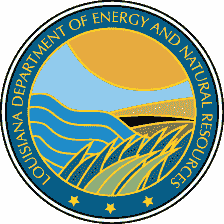Oil & Gas
TEXACO AGREEMENT REJUVENATING OIL AND GAS INDUSTRY
BATON ROUGE -- Jack Caldwell, secretary of the Department of Natural Resources, released to the State Mineral Board today a report on the 1994 Global Settlement Agreement between Texaco Inc. and the State of Louisiana saying the agreement is helping fuel the resurgence of the industry across South Louisiana.
Caldwell said that increased drilling and production activity on key state oil and gas leases is driving the comeback. Some 1,150 jobs have been created in the Louisiana petroleum sector during the past year alone, he said. His report was based on economic data and other information supplied by the state and Texaco and analyzed by LSU's Center for Energy Studies.
Robert Baumann of the LSU Office of Academic Affairs reported that the Center for Energy Studies' analysis also indicates that Texaco's expenditures directly increased state sales tax collections by some $2.7 million. An additional $2.4 million was directly generated to local parishes and school boards, Baumann said. The increased production from Global Settlement Agreement wells also generated in excess of $20 million in royalties to the state, 10 percent of which will be returned directly to the parishes in which the production occurred.
Caldwell said that while the industry as a whole is enjoying a revitalization, "There is no doubt that some of this rejuvenation can be attributed to the settlement agreement in which Texaco committed to spend more than $152 million over a five-year period developing certain state leases." Texaco has made "significant progress" implementing the terms of the settlement, he added.
The settlement agreement resolved a lengthy dispute between Texaco and the state over natural gas royalty pricing. Under terms of the settlement, Texaco paid the state $250 million and agreed to spend $152.25 million over a five-year period on an economic expansion program.
During Year Two of the agreement -- July 1995 - June 1996 --Texaco spent $76.1 million on field operations. Coupled with expenditures of $15.7 million credited over for Year One activity, Texaco exceeded its two-year obligation by more than $64 million, Caldwell said. Texaco is two years ahead of schedule on its total spending requirement, having spent $123 million, 81 percent of its $152.25 million obligation.
Other highlights of the report included the following: 109 wells have been drilled on state lease fields, 71 percent of which have proven successful; significant discoveries in several state fields have raised overall production to an equivalent of 14 million barrels of oil; more than 900 square miles of 3-D seismic data have been acquired over state fields; and production began this month in Texaco's first high tech carbon dioxide-injected reservoir at Garden Island Bay in lower Plaquemines Parish.
According to Baumann, of the 109 wells drilled through June 30, forty-two were wildcat wells -- wells drilled in high risk, undeveloped areas. There were 67 development wells, which target established reserves. The success rate for wildcat wells is 50 percent, compared to 84 percent for development wells. The combined success rate is 71 percent. Baumann said much of this success is attributable to Texaco's extensive use of 3-D seismic data.
Editors: For more information on this release, please contact Gus Rodemacher, DNR Office of Mineral Resources at (504) 342-4607.
News Archives »